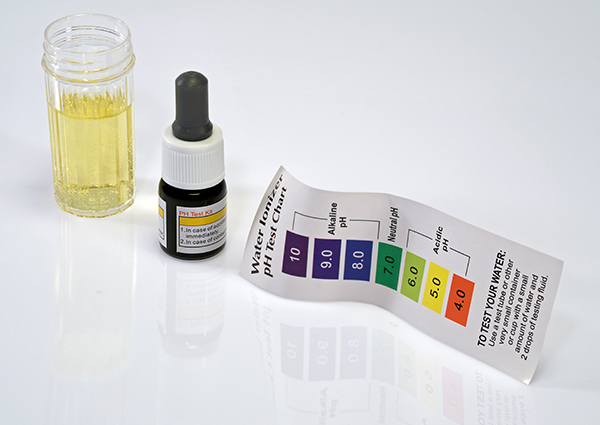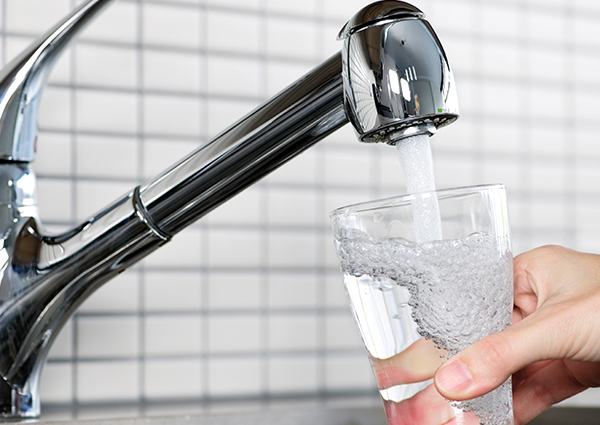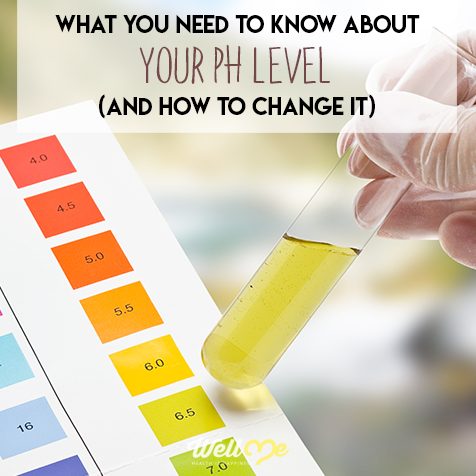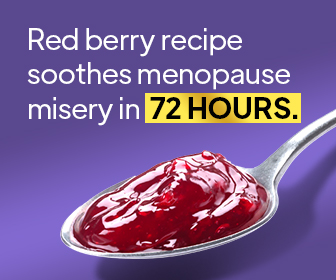There are a ton of different aspects of health that an average person needs to consider, but many people forget about a crucial one: your pH level. Finding out the pH level of your bodily fluids is a great way to get an indication of how your body is doing. Most people have a bit of an acidity problem, so introducing more alkaline foods into their diet is a great way to start living healthier.
If you have no idea what we’re talking about, never fear! Most people don’t discuss their body’s pH level on a regular basis, and many don’t even know they should be testing it. Let’s look at what your pH level really means, how to test it, and what to do if it’s too high or too low.
What is pH?

You probably recognize the term “pH” and maybe even have some idea of what it means. But do you know how it applies to your body, or why it is important?
The term “pH” is actually a shortened form of “the potential of hydrogen.” Your pH level is extremely important — more important than you’re probably, since you may not have heard about it in the context of health. In fact, most people’s main experience with learning about pH is in their high school chemistry classes. But they don’t teach you about its correlation with health and wellness, do they?
So, what does it mean to have a balanced pH? Indeed, the pH level measures how balanced your acidity or alkalinity is. Ideally, it would be somewhere right in the middle of being fully alkaline or fully acidic. The pH level scale is from the possible 0 through 14. The lower the number, the more acidic the level is. The higher the number, the more alkaline it is. A 7 is right in the middle, also known as neutral.
Surprising to some, this isn’t the best level for your pH level to be. Instead, it should err on the slightly alkaline side — that is, around 7.365. In truth, however, anywhere between 6 and 7.5 is healthy and normal, and it is likely going to go up and down throughout the day.
Why Does Your pH Level Change?

So, why is it that the pH levels change? And what actually causes these changes to occur? Generally speaking, the great fear with pH level problems is your pH becoming too acidic. If this occurs, it means that your body has been exposed to too many (or too large a quantity of) acidic substances.
Usually, the electrolytes in your body take care of this acidity, but if there is too much acidity then too many minerals are being taken from your tissues, cells, organs, bones, and so on. This can lead to a mineral deficiency which leads to a number of problems, including your immune system being unable to keep up.
So, when your body becomes too acidic, what has caused it? There are a number of different types of foods, drinks, or behaviors that could cause too much acidity. These foods or activities include:
- Processed or refined foods
- Preservatives, food coloring, or artificial sweeteners
- Additional hormones from plastics, beauty products, or foods
- Not enough exercise, or else too much exercise
- Overuse of antibiotics
- Constant stress
- Alcohol
- Drugs
- Large amounts of meat (especially if the animals aren’t grass-fed)
- Fiber deficiency
- Pesticides, herbicides, or pollution in general
- Breathing shallowly
- Eating and chewing poorly
- Not enough nutrients in foods (often caused by industrial or factory farming)
So, what happens if your pH levels become too acidic? Your body can exhibit a number of signs and symptoms of pH level being too acidic, although it is often difficult to know that these symptoms are here because of too much acidity. Nevertheless, it is important to pay attention to these symptoms and educate yourself on what they could be indicating. These symptoms could include inflammation, fatigue, weight gain, skin issues, headaches, allergies, joint pain, ulcers, and muscle pain.
If you have any of these symptoms or a combination of these symptoms, it’s possible that you could have a pH level that is too acidic. If your acidity is too high (called acidosis) for too long, it could be that certain diseases and other ailments may occur in your body. These ailments include diabetes, fibromyalgia, stroke, osteoporosis, arthritis, cancer, heart disease, or Multiple Sclerosis.
Why is Alkalinity Better than Acidity?
There’s all this talk about reducing the acidity of your body and increasing the alkalinity. Why is that? To put it simply, alkaline diets are good for your health. Consuming an alkaline diet can have some amazing benefits, including improving bone health, reducing the loss of muscle mass, helping with hypertension, stroke, or heart health, improving memory and brain function, increasing magnesium (which helps your body utilize vitamin D), and even could help with chemotherapy.[1]
Acidosis
Meanwhile, too much acidity in your body fluids could lead to acidosis. Your body already produces plenty of acid on its own with its regular functions, but normally your kidneys and lungs are designed to balance that out. For various reasons, these organs may not be able to keep up with the acidity and might stop balancing your pH levels effectively.
Acidosis is a problem because it can lead to some major health problems. There are two types of acidosis: respiratory acidosis and metabolic acidosis. Respiratory acidosis occurs when your body starts seeing a buildup of CO2.
Usually, this CO2 is removed with the lungs via breathing naturally, but sometimes it gets to be too much. Respiratory acidosis can occur from a chest injury, asthma or other airway conditions, misuse or overuse of sedatives or alcohol, the muscles in your chest being too weak, or nervous system issues.[2]

Metabolic acidosis comes from your kidneys not being able to keep up with the acid buildup, or when the kidneys start ridding the body of too much of the alkaline, thus throwing off the balance. Metabolic acidosis can take the form of diabetic acidosis (which occurs in people with diabetes if it’s not controlled properly), hyperchloremic acidosis (which can occur after too much diarrhea or vomiting), lactic acidosis (from too much lactic acid caused by a variety of health issues), or renal tubular acidosis (from poor kidney function).
A person is at a higher risk for developing acidosis if their diet is high in fat and low in carbs, if they have kidney failure, if they are obese, if they are dehydrated, if they have diabetes, or if they have poisoning from methanol or aspirin. People with acidosis typically exhibit it with one or more of the following symptoms:
- Headache
- Sleepiness
- Jaundice
- Higher heart rate
- Fruity-smelling breath
- Confusion
- Fatigue
- Lack of appetite
- Rapid, shallow breathing
- Easily tired
Acidosis is more serious than just having your bodily fluids being a bit too acidic. So, if you suspect you have it, see your doctor right away. You can also test your pH level at home to get a better idea of whether you do indeed have acidosis.
Fun Fact: If a food is acidic, it doesn’t always mean they are acid forming in your body. Tomatoes and grapefruit, for example, are known for their acidity, but they will actually make your pH level more alkaline.
How Can You Create a pH Balance?
What you eat makes the biggest difference in your pH level. This means that, if you suspect you might have an acidity issue, the best changes come from what you choose to eat. There are a number of foods to help restore pH balance, many of which are delicious and easy to find.
First of all, potassium-rich produce works well because potassium serves as a cushion against acidity. This is especially true when it comes to raw, fresh fruits and vegetables. The typical diet in the United States or Western Europe does not include much of these products, which may be one of the reasons that many Americans suffer from too much acidity.

If you look at other aspects of a typical American’s diet, it becomes clear why acidity is such a widespread issue. Not only does a lack of fresh fruits and vegetables lessen your body’s ability to fight off an acid issue, but an excess of animal protein directly causes a buildup of sulfuric acid in your blood. In other words, too much meat and not enough produce is a toxic combination. This buildup of sulfuric acid occurs when amino acids start breaking down.
Not only that, but grains are another problematic type of food if your pH is too acidic. Did you know that every single kind of grain creates some amount of acidity? This applies to both whole grains and other kinds of grains such as white bread. Did you also know that most Americans get most of their plant nutrition from wheat or corn that has been processed?
Of course, that’s not all. Although we’ve been told for generations that they are healthy, even dairy products packed with calcium cause acidity in the body. This is linked to osteoporosis because of the acidity. That goes back to what was explained earlier — your bloodstream has too much acid so calcium, which is alkaline, is taken from the bones to use as a balancer of that acidity in your blood. The following foods tend to form acid:
- Eggs
- Lentils
- Pasta
- Rice
- Whole wheat
- Peanuts
- Walnuts
- White bread
- Milk
- Oats
- Meat
- Corn flakes
The following foods are considered “alkaline foods,” since they help make your blood more alkaline:
- Citrus fruits
- Dates
- Raisins
- Spinach
- Most other fruits
- Mushrooms
- Most vegetables
Raw foods
If you are trying to get your diet to be more alkaline encouraging, you should not only eat the above foods but you should also start eating more raw foods. Cooking fruits and vegetables tends to minimize the alkaline minerals that are in them, so simply eat them raw on a daily basis. If you’re not a big fan of snacking on a raw fruit or vegetable, try juicing it instead. An alternate option to cooking is to steam the vegetable or fruit lightly, which doesn’t take away the alkalinizing minerals quite as much.
Other Ways to “Alkalinize” Your Diet
Besides increasing your raw produce intake, you can also try an easy addition to your drinking habits: alkaline water or green drinks.

In fact, alkaline water will have a pH level of between 8.5 and 11, making it an excellent way to alkalinize your body. Believe it or not, tap water or bottled water is generally quite acidic, meaning whenever you drink water you’re fighting against any efforts to get your blood to be more alkaline! Don’t believe us? Run a pH test on the water from your tap!
Fun Fact: Most tap water and bottled water is acidic. Drinking alkaline water is one way to solve this problem, although there is some controversy about whether it actually works. There is some research, however, that shows it has numerous health benefits, including helping with the treatment of reflux disease.
It’s also important to note that filtered water will also be rather acidic, especially if it is filtered via reverse osmosis. That said, it is nonetheless a better (less acidic) option than tap water or typical bottled water.
Summary: What Should You Do Now?
Now that you understand that the pH level in your body and bodily fluids makes a big difference to your health, what should you do? Remember, just about anyone can benefit from a more alkaline diet, so starting to incorporate those fresh fruits and vegetables is one great way to get healthier right away.
If you really want to know where you stand, the first step is to test your pH level. This will help you know whether you really need to change something, or if you’re doing okay with your current habits. It’s a good idea for anyone to check their pH level once in a while, just to see how the invisible processes of their body are doing.

Action Steps: Tips for Testing your pH
- Buy a pH strip at your local pharmacy.
- You can use urine or saliva to do the test. If urine, use the second urination of the morning for the most accurate results. Other good times to test are an hour before eating or two hours after eating.[3]
- Check the color on the strip and compare it with the color chart in your testing package.
- If you are testing your saliva, a healthy balance should be between 6.8 and 7.2 and your urine should be between 7.0 and 8.0, depending on the time of day. There is some discussion about what a healthy range is, so feel free to look into it further.
- If the pH level is too low (acidic) or too high (alkaline), start altering your diet and habits to fix the problem (see above). If it seems extreme in either direction, check in with your doctor.
Remember, an acidic pH level isn’t a condition in itself; it is an indicator or measuring tool for finding out how well your body is functioning. Use the information in this article to start living a healthier life. It never hurts to be more informed about your health, after all.
References
- [1] https://www.ncbi.nlm.nih.gov/pmc/articles/PMC3195546/
- [2] https://www.healthline.com/health/acidosis
- [3] https://draxe.com/balancing-act-why-ph-is-crucial-to-health/
- Fun Fact Source: “Balancing Act: Why pH is Crucial to Health.” Dr. Axe. January 2010. <https://draxe.com/balancing-act-why-ph-is-crucial-to-health/>
- Fun Fact Source: “Potential benefits of pH 8.8 alkaline drinking water as an adjunct in the treatment of reflux disease.” NCBI. July 2012. < https://www.ncbi.nlm.nih.gov/pubmed/22844861>








